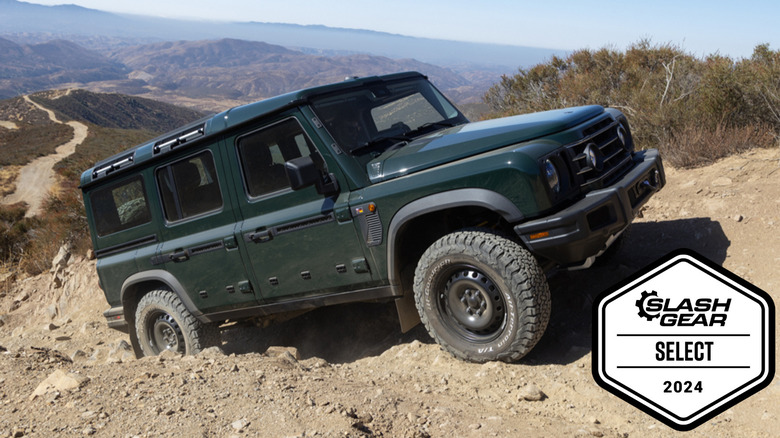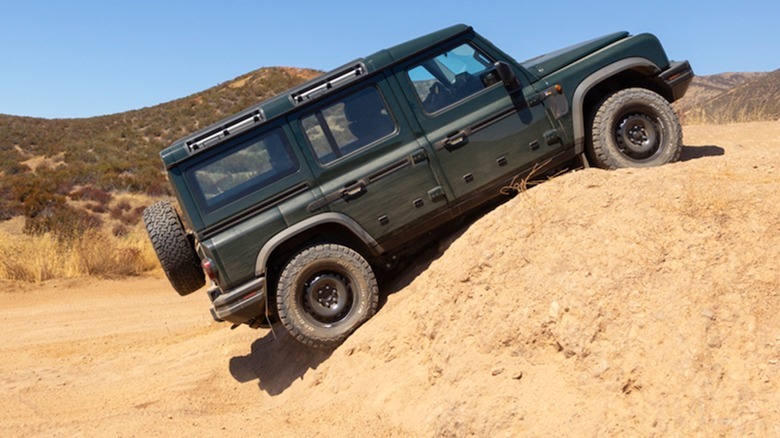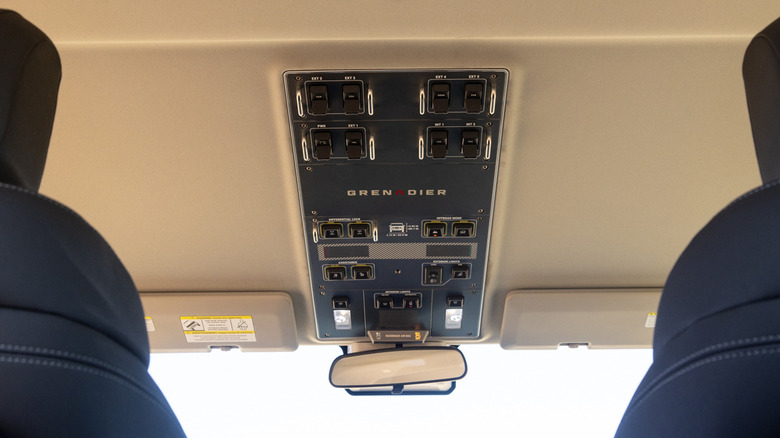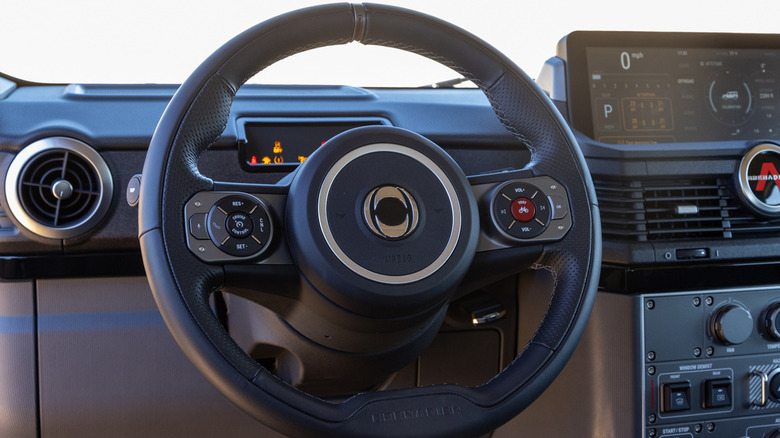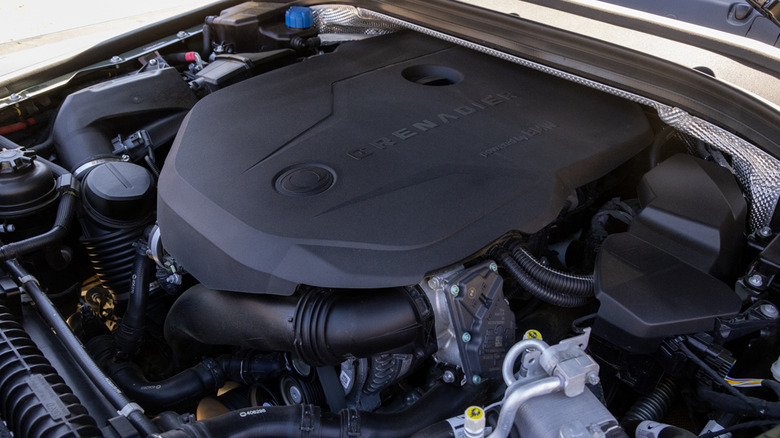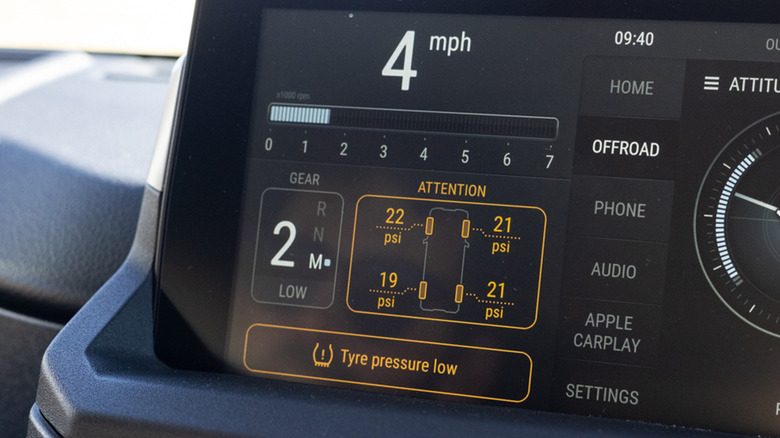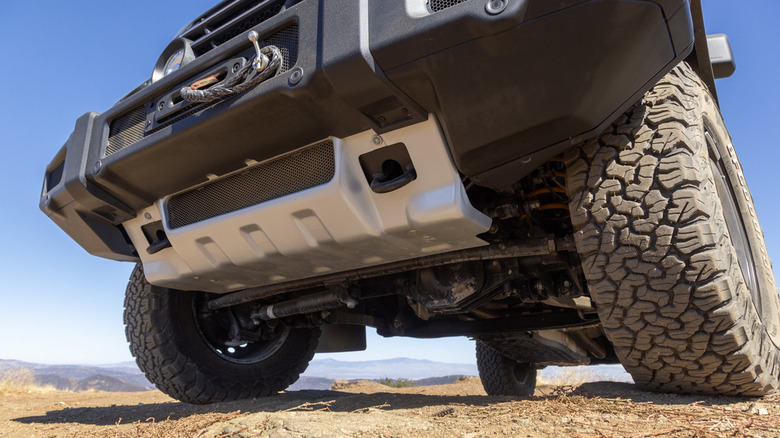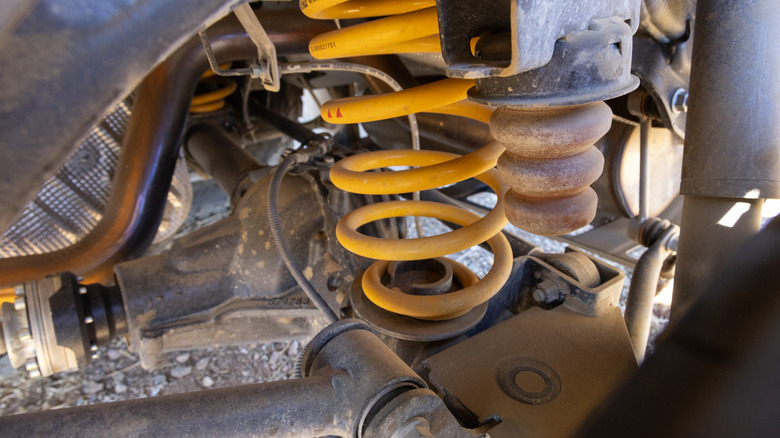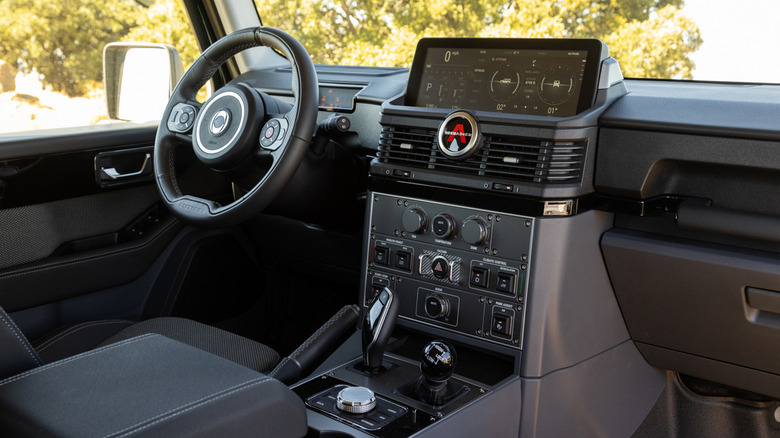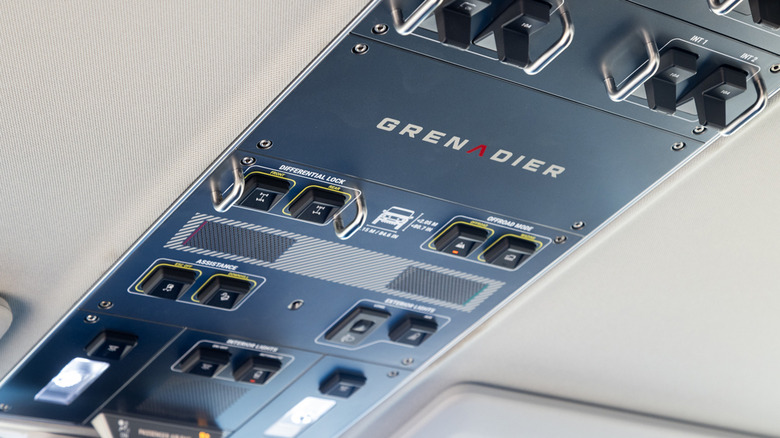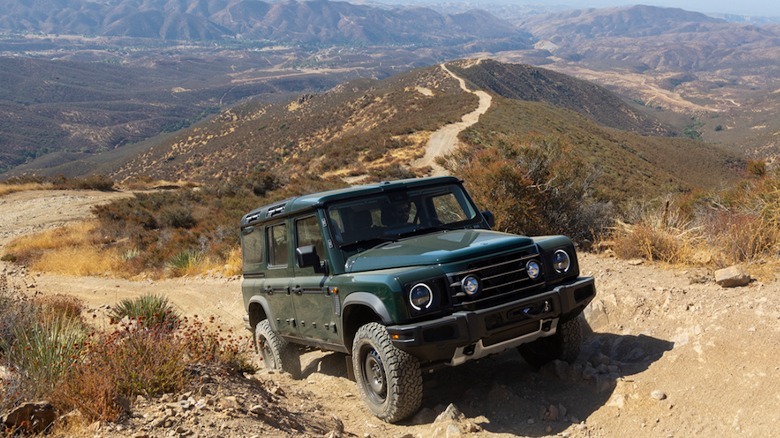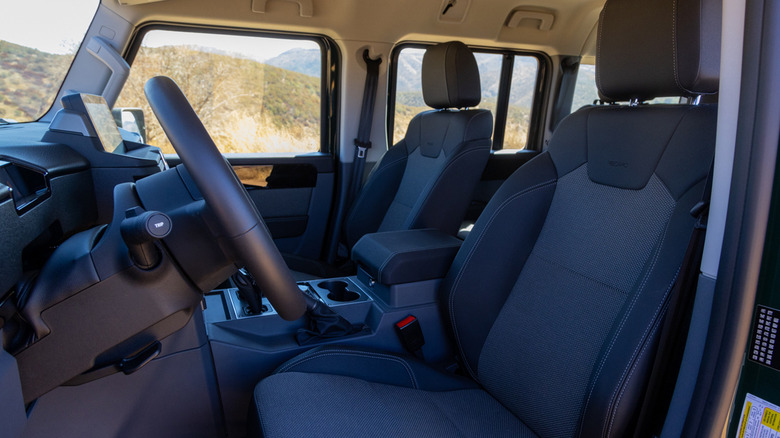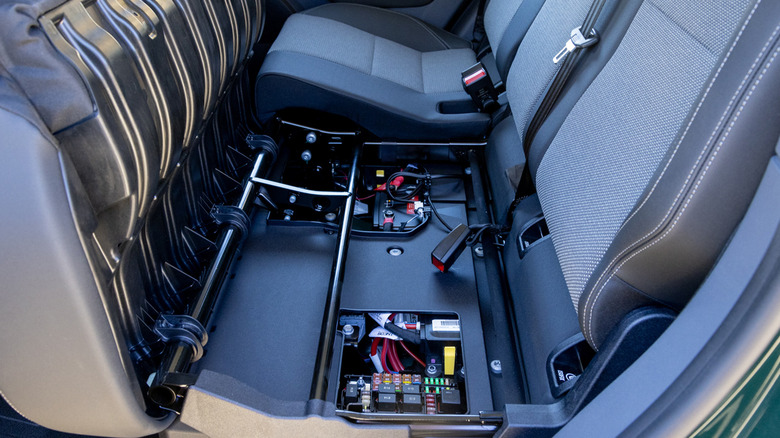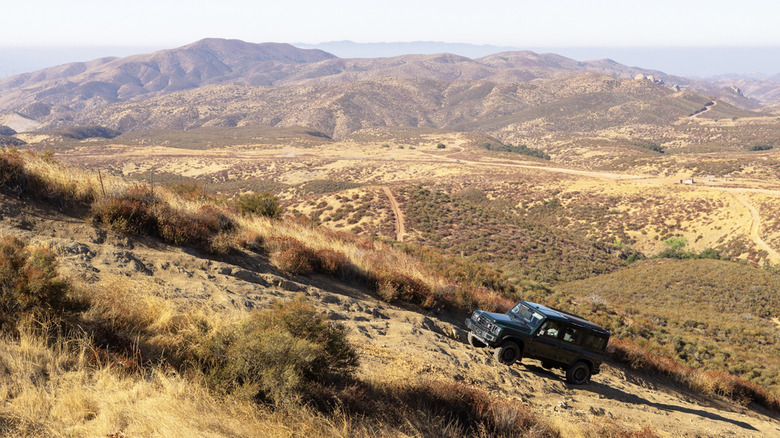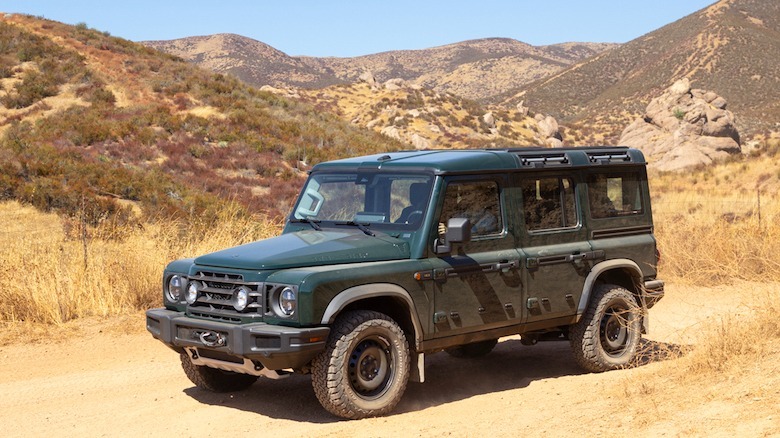2024 Ineos Grenadier Review: Charming Interior, Big Price, Old-School Land Rover Spirit
- Classic Defender style with modern powertrain performance
- Built purposefully for extended off-road sojourns
- Functional switchgear always brings a smile
- Comfortable inside, excellent visibility, and daily driveable, too
- Steering requires a serious adjustment period
- Pricing higher than originally promised
- Unproven long-term reliability
Any time a company needs to ship someone out to teach how to use a car, I never think the company shows confidence in the vehicle's concept or development not a great sign. Ferrari needed to provide some coaching about how to use the 296 GTS's drive modes, for example, and how not to kill the battery. And the Lamborghini Revuelto deserved a lesson on how to figure out the incomprehensible infotainment system. For the Grenadier, Ineos sent out a rep to make sure I knew how to use all the off-road settings, but also to explain some of the basic concepts that went into developing a modernized Land Rover Defender.
To be fair, the Grenadier's unique combination of a modern powertrain with vintage four-wheel-drive controls and peculiar steering might overwhelm anyone who lacks off-road experience. But Ineos knew I had previously driven the Grenadier in the UK almost two years ago, too. That trip afforded me an excellent opportunity to learn about this "new" SUV that sprang forth from a multinational petrochemical CEO's brain — over beers at the Grenadier pub – because he was annoyed at Land Rover for canceling the classic Defender.
The resulting truck still clearly needed some additional time to reach the level of refinement that Ineos' engineers clearly desired. Most notably, front locking differential displayed a nasty habit of refusing to unlock unless I drove in a full circle at full steering lock, just about the last thing you want to do with a front locker. But more recently, over the course of a longer loaner period in Los Angeles, I finally got a chance to experience how that vintage ethos applies to daily driving. And of course, I needed to into the more familiar desert environments to do some more serious off-roading, rather than in the muddy, misty English countryside.
A quick reminder of the Grenadier's finer points
First, though, the lessons. I received a reminder of how the steering system works, with little to no centering force, as well as how to use the cue-ball transfer case knob to enter 4-High and 4-Low, or lock the center differential. Then finally, a quick revisiting of the ceiling controls for locking diffs and drive modes.
After the coaching ended, I immediately took the Grenadier out for a lengthier test drive in town. And I can admit, that steering system definitely demands a long adjustment period. Because the wheel never fully returns to center, I needed to physically put muscle effort into spinning back to straighten out. The wheel itself points well, though, for a solid-front-axle truck, yet the sensation kept catching me by surprise as I turned too far into each corner. In the modern era, though, other drivers probably just thought I was texting.
Adjusting to the Grenadier takes time
At this late date in my automotive career, I can typically adjust to new cars, SUVs, or trucks quite quickly—even the variance between top or floor-hinging gas and clutch pedals while heel-toeing takes less mental effort than in years past. But maybe because I spent my week with the Grenadier also hopping in and out of multiple other vehicles, the steering kept me on edge.
Otherwise, the rest of the Landie-esque details work surprisingly well for a daily driver. The compact footprint, when compared to cartoonishly wide American off-roaders, makes narrow streets and parking lots easy to negotiate. And the upright, square windows combine with large rearview mirrors and a narrow hood to provide plenty of visibility in just about any direction—other than the area blocked by the rear barn door's break. The Recaro seats fit my body nicely, though I definitely wished for some additional lumbar support adjustability, as well as leather or high-quality faux leather instead of the houndstooth-ish cloth inserts for cleaning considerations.
A superb powerplant sourced from BMW
Meanwhile, the powertrain combo sourced from BMW gets the job done with little fuss, too. That turbocharged 3.0-liter B58 appears tuned for more low-end torque than high-end horsepower, as on the Toyota Supra, and the eight-speed ZF transmission never disappoints. The suspension allows for a bit of body roll, but nothing excessive, and absorbs speed bumps, ruts, and cracks in the road admirably for a solid-axle truck.
Even the tech integration went smoothly, too. I quickly acclimated to only seeing little warning lights on the simple display ahead of the steering wheel, with all other info on the center touchscreen. CarPlay connected consistently, and I thoroughly enjoyed flipping through the climate control settings with such substantial switchgear.
Out of the city and onto the trails
Driving in town might apply for most Grenadier buyers here in Southern California, but Ineos purposefully built this Defender derivative to serve as the ultimate overland vehicle rather than a daily commuter—even if the urban technical apparel buyer here in Los Angeles might enjoy doing so with a snorkel and roof box and hi-lift jack strapped to the hood. To figure out whether the Grenadier can handle dirt to match the desert-ready design, I headed out to my typical test route up the hard climb at Rowher Flats.
First, I aired the BFGoodrich T/A K02 tires down to my usual 22-24 PSI, a number that helps to keep tire beads on those 17-inch steel wheels but also seems more appropriate for overlanding-style off-roading rather than hardcore rock-crawling. Thankfully, the tire pressure section of the center touchscreen merely showed a restrained warning, rather than completely freaking out and overwhelming the rest of the information, as on some other trucks. And even cruising up the graded road to the central staging point at Rowher, the Grenadier's true purpose only began to shine through all the more.
Purpose built on purpose
It's important to note that anyone who believes the only off-roading worth doing involves high-speed dune charging and whoop jumping can abandon hope for the Grenadier. Ineos never intended to target Raptors or TRXs or ZR2s. To an extent, the Grenadier doesn't even compete with the new Defender, which ditched true off-roading cred in favor of overly techy and plasticky mall crawling capabilities.
The real competition for a Grenadier comes from Jeep's Wrangler and Gladiator, maybe a barebones spec or older generation G-Wagon. Having spent a ton of seat time in Jeeps, which get the job done, the Grenadier's lack of wind noise, improved interior ergonomics, and pleasing switchgear stands in stark contrast with the prehistoric Fiat-Chrysler design and build quality. That's not to mention the stop-start battery fiasco, nor the driving dynamics from a bygone era.
Suspension and steering designed for the dirt
Then again, the Grenadier definitely delivers driving dynamics from that bygone era—but purposefully. Long safari drives, extended sojourns away from pavement, adventures into the great beyond. Slightly more spirited, at least, than a day at Rowher Flats. And yet, Rowher provided an excellent opportunity to find exactly where the Grenadier's capabilities reach a limit stop.
I spent most of the time in 4-Low with the center differential locked via the transfer case ball shifter. The shifter's circular pattern reminded me of a restored G-Wagon Wolf I drove earlier this year, but again, takes a moment of thought to actually employ correctly. And the B58 also provided enough torque to do most of the day's work in 4-High, really, but for the slow hike up the hill. Here, the visibility over the narrow hood stood in stark contrast to American off-roaders while spotting obstacles and cresting blind rises.
Even the traction control programming works perfectly off-road
Even more importantly, the steering and damper tuning that felt a bit off back on the pavement worked wonderfully on the graded road, with enough compliance and shock absorption to keep the body confidentally squared up as I pointed the truck through little ruts and washes. On the steeper terrain, the dampers then allowed for plenty of articulation—more than expected, really, without disconnecting sway bars—as I slowly and steadily just pointed up the hill.
Instead of consciously needing to spin the steering wheel back toward center, now I unconsciously steered to my selected line. The upright body kept fairly level, with the nimble rear tires tracing a similar path thanks to the relatively short wheelbase. We're not at the level of a fully lifted Rubicon rock-crawler, and not trying to pose with a wheel or two off the ground. Again, that's not quite the point, and yet the Grenadier made it up one seriously steep and deep elephant track with just the rear locker engaged.
In that scenario, the traction control programming perfectly allowed a little bit of wheelspin in off-road mode, as I dipped into the linear throttle in second gear to prevent too much torque from overwhelming the tires in 4-Low and first. The 2.5:1 low range ratio lacks some of the super low end of a Jeep, but the turbo engine's excellent modulation combine with the ZF transmission—also employed by Jeep—to make up for the difference. A couple of moments of off-camber fun and the Grenadier just bucked up and over, without lifting throttle or tires off the ground for extended periods.
Noticing the little details
Off-roading in my home territory revealed a few shortcomings I never noticed back in England, though. The largest involves one of the best features: those ceiling buttons. The system for selecting drive modes and locking diffs requires pushing the button until a light flashes, then starting to drive until the Grenadier recognizes information from wheel sensors to detect that the selecting mode has actually been activated. Then, the light goes solid or turns off.
Unfortunately, every time I used my finger to push a button, my fingertip covered the light—meaning that I needed to check multiple times, frequently start driving, and then stop to try again. On one hand, this system potentially makes sketchy situations even sketchier, at the very moment a locking front diff might unexpectedly come most in handy.
On the other hand, the Grenadier thereby emphasizes the importance of keeping an eye on upcoming terrain and picking powertrain settings, as well as a good line, well in advance. In doing so, I revisited a more old-school way of off-roading more similar to my Mitsubishi Montero than so many overly computerized modern vehicles that do everything for the driver today: the Defender and its finicky drive modes especially, but also as far as the 911 Dakar too.
Noticeable improvements since early 2023
The Grenadier features a few awesome details, too. I love the "Toot" button on the steering wheel, a sort of polite honk that won't startle pedestrians, cyclists, the person texting at the green light ahead of you, or even livestock and wild animals. A "Built On Purpose" badge made me chuckle, as if other off-roaders don't go through years, if not decades, of development hell. I appreciated the full-size matching spare on the big barn doors, though can agree with others who think it odd that the smaller door opens first. On mine, I'd also want a built-in air compressor, in addition to the winch.
All in all, a week with the Grenadier revealed that an additional 20 months of production probably helped, too. This truck arrived in much better shape than the one I drove in the UK, with more uniform panel gaps, straighter upholstery stitching, more reliable switchgear—even the front locker turned off no problem.
Inflation strikes everywhere
The aesthetics still work wonders for me, an admitted 1990s SUV fanatic who prefers the boxy and upright style to aggressive and overly macho designs so popular today. That green paint, the steel wheels, the mix of nautical and aeronautical functionality. But the Grenadier goes far beyond style points—unlike many soft-roaders on the market—and can live up to the proposition that such a back-to-basics design puts out. The battery and main electronics sit under the rear bench seat, to prevent water intrusion. Fording mode turns off as much of the electronics below the waterline to prevent short circuits.
I still wish the transfer case allowed for two-wheel drive, instead of only full-time all-wheel drive. The BMW shifter also looks entirely out of place amid the rest of the utilitarian, boxy interior. And pricing turned out a bit higher than expected, at $71,500 to start at $82,150 as tested. Yet I truly fail to grasp how the beknighted Ineos founder Jim Ratcliffe intends to turn a profit on a new vehicle with the kind of limited appeal possible in something so purposefully antiquated.
So much better than a Defender
Maybe that couple-few pints at the Grenadier pub turned into an F-You to Land Rover that will actually withstand the test of time. The vehicle itself seems confidently built—on purpose, remember—and at every step of the driving experience, reinforces the impression that each and every development decision received plenty of thought and intention. Plenty of other reviewers seem unable to comprehend that purpose, though, and I wonder whether most customers will either.
Ineos definitely achieved Ratcliffe's goal, whether or not the general public and automotive press understands or agrees. And I hope that this petrochemical conglomerate turned automaker can find success, much of which I suspect will depend on long-term reliability.
At least in that regard, as well as the styling and capability, the Grenadier needs not worry about the current Defender. The powertrain is a known quantity, proven and time-tested, but everything else that Ineos built around it remains the real question. And yet, I'm fairly convinced that if and when a short cab and long bed configuration comes out, Ineos will have built the perfect overlanding setup for my taste and needs, if not my budget.
